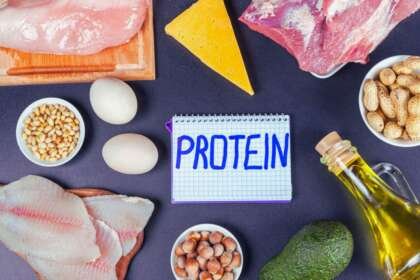The Verticle Diet is a nutritional program developed by bodybuilder and powerlifter Stan Efferding. It focuses on eating foods that are easy to digest and nutrient-dense to support optimal performance and body composition goals. The diet emphasizes high-quality proteins, healthy fats, non-starchy vegetables, and limited processed carbohydrates.
Origins of the Verticle Diet
Stan Efferding is a professional bodybuilder and powerlifter known for his massive size and strength. Despite being over 300 pounds, Efferding has totaled over 2,300 pounds in powerlifting competitions.
As a lifelong athlete and bodybuilder, Efferding found many traditional diets left him feeling bloated and sluggish. He developed the Verticle Diet as a solution for himself and other high-level athletes to look, feel, and perform their best year-round.
The principles of the Verticle Diet are based on nutrient timing, food quality, and digestibility. Efferding coined the term “verticle” to represent optimal vertical growth, health, and performance.
Overview of the Verticle Diet
The Verticle Diet has three main components:
1. High-Quality Protein Sources
The Verticle Diet recommends consuming high amounts of complete, easily digestible protein sources at each meal. Recommended proteins include egg whites, boneless skinless chicken breast, grass-fed beef, bison, fish, and whey protein powder.
Efferding recommends consuming at least 1 gram of protein per pound of body weight daily. For a 200 pound person, that would equal 200 grams of protein each day.
2. Starchy Carbohydrates Strategically Timed
While processed carbohydrates are limited, the Verticle Diet emphasizes the strategic use of starchy carbs like rice, potatoes, and sweet potatoes.
Starchy carbs are recommended in the period around workouts to promote muscle growth and replenish glycogen stores. The diet recommends avoiding starchy carbs at other times of day.
3. Non-Starchy Vegetables
Non-starchy vegetables make up the bulk of carb consumption in the Verticle Diet. Recommended choices include green vegetables, peppers, mushrooms, onions, tomatoes, and carrots.
Non-starchy veggies provide vitamins, minerals, and fiber. They also help promote fullness and contain minimal calories.
Foods to Eat on the Verticle Diet
Here are some of the core foods emphasized on the Verticle Diet:
- Lean proteins: Egg whites, chicken breast, turkey, fish, red meat, whey protein
- Starchy carbs: Rice, potatoes, sweet potatoes, quinoa
- Non-starchy vegetables: Broccoli, spinach, kale, lettuce, tomatoes, peppers, mushrooms, onions, carrots
- Healthy fats: Olive oil, coconut oil, avocados, nuts, nut butters
- Limited fruit: Berries are lower in sugar than other fruits
The diet recommends sticking to mostly whole, minimally processed foods. Things like desserts, sugary drinks, fried foods, and excessive alcohol are avoided.
Benefits of the Verticle Diet
There are several purported benefits to following the Verticle Diet:
- Increased muscle growth and faster recovery: The strategic use of carbs and high protein supports building muscle.
- Improved body composition: The diet helps burn fat while building lean muscle mass.
- More energy and better sleep: Nutrient-dense foods provide steady energy and blood sugar levels.
- Better digestive health: The emphasis on high-quality proteins and non-starchy veggies improves digestion.
- Reduced inflammation: The anti-inflammatory foods can relieve joint pain and injuries.
- Long term sustainability: The flexible structure of the diet makes it easy to stick to long term.
The Verticle Diet is designed for high-level athletes and bodybuilders. But the principles can benefit anyone looking to improve their nutrition for health, fitness, and body composition goals.
Sample Verticle Diet Meal Plan
A typical day on the Verticle Diet may look like:
Breakfast
- Egg white omelet with vegetables
- Oatmeal with berries
- Whey protein shake
Lunch
- Grilled chicken breast
- Brown rice
- Steamed broccoli
Dinner
- Grilled salmon
- Baked sweet potato
- Salad with olive oil dressing
Snacks
- Cottage cheese
- Hard boiled eggs
- Protein bar
- Vegetables and hummus
- Greek yogurt with nuts
As shown in the sample meal plan, the Verticle Diet emphasizes lean proteins, non-starchy vegetables, and strategic carbs timed around workouts. Meals are built around protein, with carbs and fat included in moderation.
Tips for Success on the Verticle Diet
Here are some tips to stay on track with the Verticle Diet:
- Prepare meals in advance to ensure you always have healthy options on hand
- Drink plenty of water and avoid sugary beverages
- Time your starchy carb meals before and after training for best results
- Include a protein source with every meal and snack
- Fill half your plate with non-starchy vegetables at meals
- Moderate fruit intake and avoid added sugars
- Supplement with whey protein powder, creatine, and fish oil
- Allow yourself a cheat meal 1-2 times per week to satisfy cravings
- Adjust your calories based on your individual goals for weight loss, maintenance or gain
With some planning and preparation, the Verticle Diet can be customized to your own fitness objectives and nutritional needs.
The Verticle Diet vs. Keto and Paleo Diets
The Verticle Diet has some similarities to trendy diets like the keto and paleo diets, as well as some distinct differences:
- Like keto, the Verticle Diet limits processed carbs and sugars. But Verticle allows strategic use of starchy carbs whereas keto severely restricts carb intake.
- Similar to paleo, the Verticle Diet emphasizes meat, eggs, vegetables, nuts, seeds and healthy fats. But Verticle incorporates dairy products and allows white rice, wheat tortillas and potatoes.
- The Verticle Diet permits occasional alcohol consumption whereas keto and paleo recommend avoiding alcohol.
- The Verticle Diet is specifically designed for athletes and bodybuilders, with a heavy emphasis on optimal protein intake. The keto and paleo diets are targeted for general health and weight loss.
The common ground between these three diets is an emphasis on whole, minimally processed foods. But the Verticle Diet is tailored uniquely for individuals looking to maximize muscle gains and athletic performance.
Is the Verticle Diet Suitable For You?
The Verticle Diet is best suited for:
- Athletes involved in intense training who need high calorie intake
- Bodybuilders looking to build muscle and burn fat
- Powerlifters and strength athletes aiming to increase strength
- Active individuals looking to improve body composition
- People seeking steady energy levels throughout the day
The Verticle Diet may be less ideal for:
- Individuals who intensely restrict carbs like endurance athletes
- Sedentary people with lower calorie needs
- Anyone with a medical condition that requires specialized nutrition
- Vegans and vegetarians (it can be modified but the diet is heavily animal protein based)
- Those looking for a restrictive “quick fix” diet for fast weight loss
As with adopting any diet, speak with your healthcare provider first if you have any medical conditions or concerns. Be sure to adjust your calorie intake and macros appropriately for your individual goals and activity levels.
The Final Word on the Verticle Diet
The Verticle Diet offers a simple, sustainable approach to eating that provides the protein, fuel, nutrients, and recovery active individuals need to perform at their best.
By emphasizing high-quality proteins, strategic carbohydrates, and abundant vegetables, the Verticle Diet helps build muscle, torch fat, and support optimal health. With proper personalization and preparation, the principles of this diet can help any active person look, feel, and move better.












